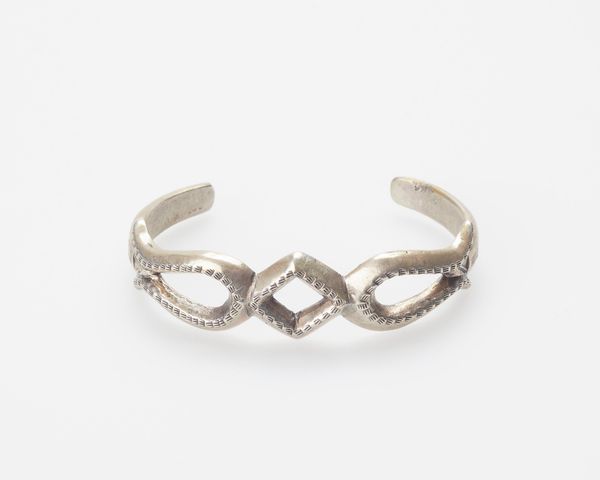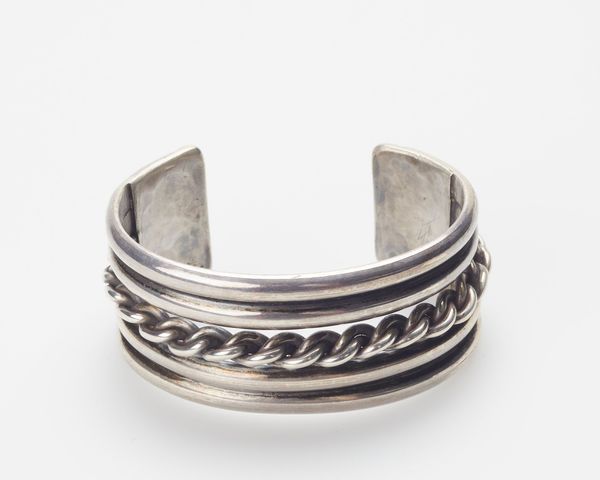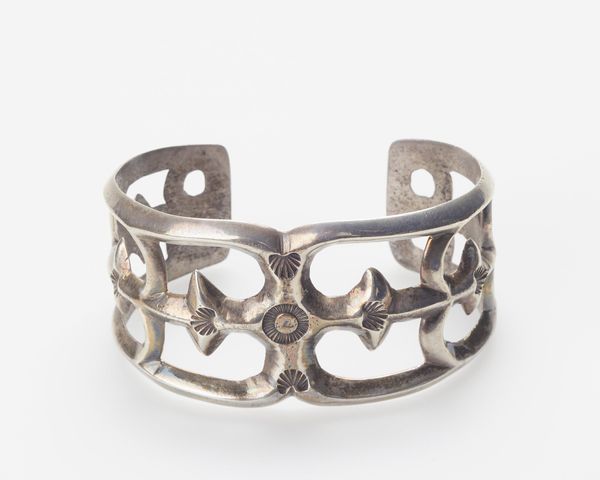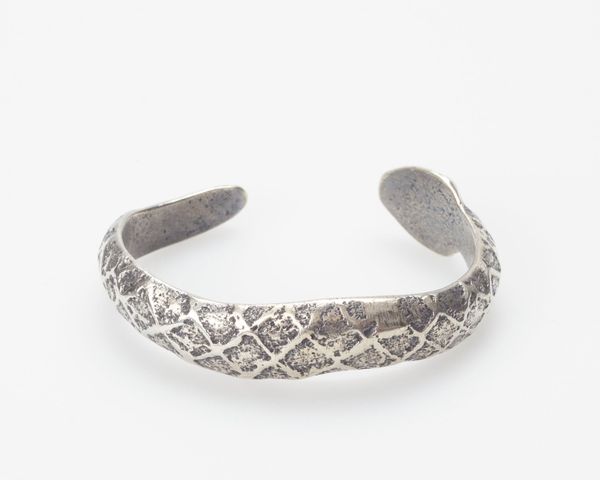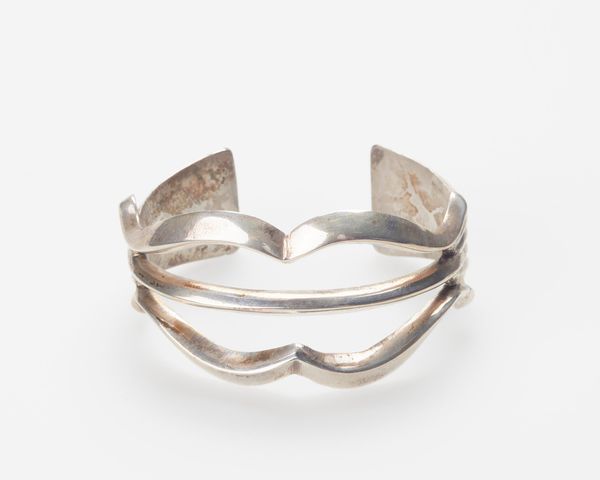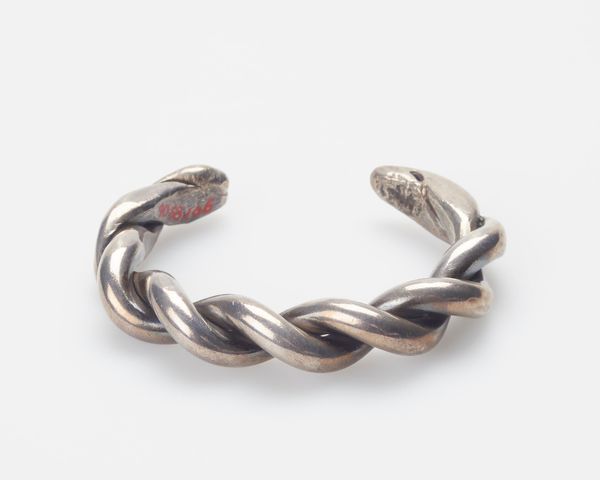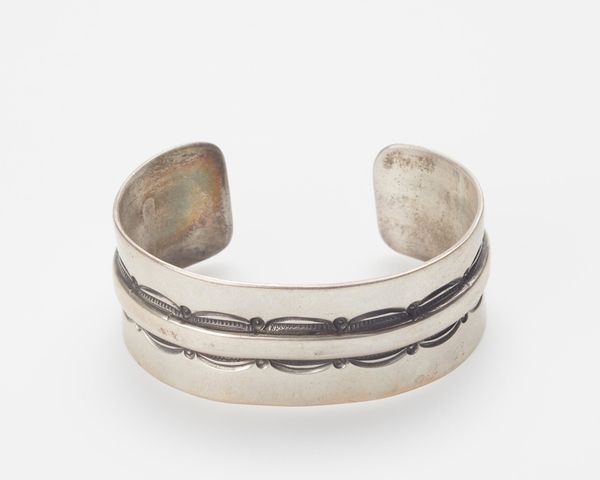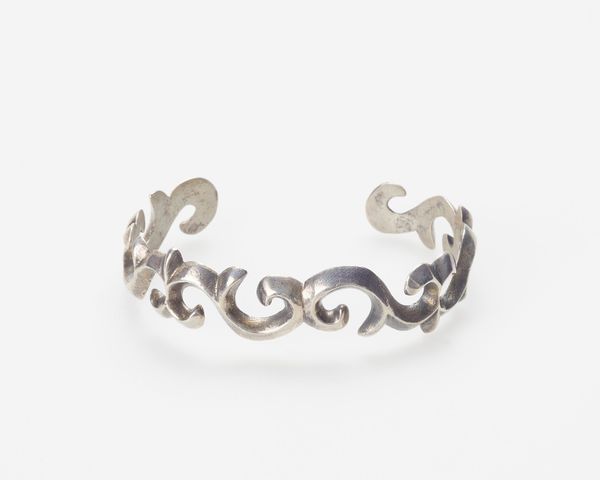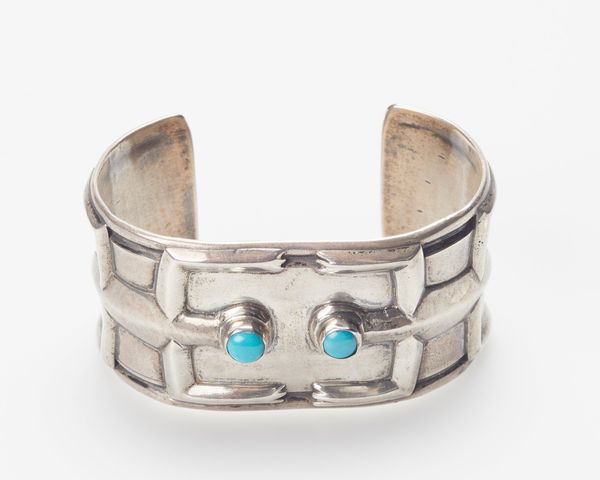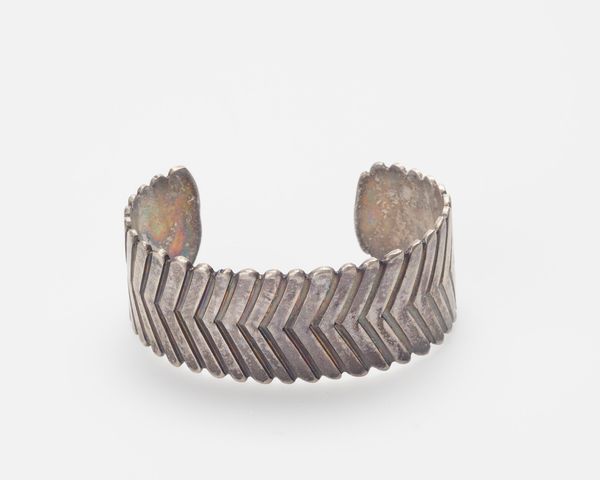
silver, metal
#
silver
#
metal
#
decorative-art
#
indigenous-americas
Dimensions: 2 5/8 x 3/16 in. (6.67 x 0.48 cm)
Copyright: Public Domain
Editor: This striking silver bracelet, dating from around 1950, was created by an artist from the Navajo, or Diné, community. It's beautifully simple and elegant, yet the craftsmanship feels so intricate. What can you tell me about it? Curator: It’s a great example of mid-20th century Navajo silverwork. What’s important to understand is the context of its production. Pieces like this bracelet were made during a period where the market economy deeply influenced Indigenous art. Tourist demand shaped styles and designs. Editor: So, was the bracelet specifically designed to appeal to a non-Native audience? Curator: Very possibly. Though motifs found in nature, family clans, and healing ceremonies had specific, important meaning to its creators, many artists had to prioritize pieces for trade rather than sacred pieces for spiritual practice. Editor: Does the act of selling artwork diminish its cultural significance? Curator: Not necessarily, but it introduces complex dynamics. Think about it: the aesthetic choices, the materials used, even the price point, were all factors negotiated within a broader economic and social framework dominated by non-Native tastes and purchasing power. These bracelets facilitated trade, but what did that transaction cost, beyond a monetary value? Editor: So, looking at this bracelet, we're not just seeing an ornament but an artifact shaped by these historical forces? Curator: Precisely. It invites us to consider the role of Indigenous artists in shaping their representation and identity within a marketplace driven by external perceptions. Editor: This makes me look at it differently. It's more than just a pretty object. Thank you.
Comments
No comments
Be the first to comment and join the conversation on the ultimate creative platform.


